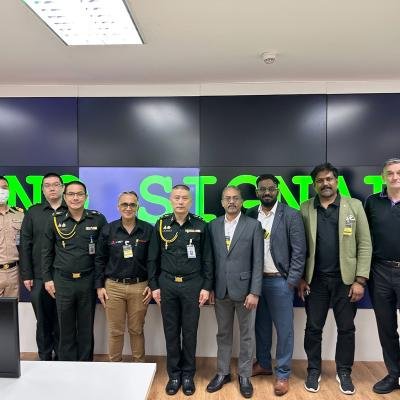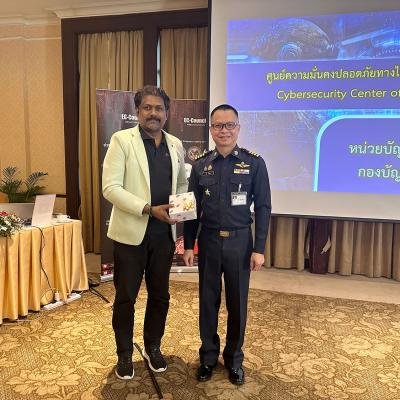In the ever-expanding realm of cybersecurity, few threats loom as ominously as ransomware. Recent developments in the tactics and targets of ransomware groups highlight the dynamic and relentless nature of these malicious actors. This blog delves into the latest insights gleaned from the activities of prominent ransomware groups such as Akira, LockBit, and Agenda, offering valuable lessons for cybersecurity practitioners and organizations worldwide.
The Ascendance of Akira: A Multi-Faceted Threat
Akira ransomware has emerged as a formidable adversary, inflicting substantial financial losses and operational disruptions on organizations across the globe. Initially focusing on Windows systems, Akira has since expanded its repertoire to include Linux servers, showcasing a level of adaptability and sophistication that demands attention. With a reported $42 million in illicit gains and over 250 victims affected, the scale of Akira's impact is staggering. Understanding their tactics is crucial for bolstering defenses against this evolving threat.
Unraveling Akira's Tactics: From Exploitation to Encryption
Akira's success hinges on a combination of stealthy infiltration techniques and potent encryption algorithms. Leveraging known vulnerabilities in Cisco appliances and exploiting Remote Desktop Protocol (RDP) vulnerabilities, the group gains initial access to target networks. Once inside, they deploy a hybrid encryption algorithm, blending Chacha20 and RSA, to effectively lock down critical data. Furthermore, Akira's ability to delete shadow copies and inhibit system recovery underscores the depth of their technical proficiency and strategic acumen.
LockBit's Fall and Attempted Resurgence: A Cautionary Tale
LockBit, once a dominant force in the ransomware ecosystem, faced a significant setback following a law enforcement crackdown. However, recent indicators suggest the group is endeavoring to regain lost ground, resorting to posting fake victims on new data leak sites to bolster their image. The tumultuous trajectory of LockBit serves as a stark reminder of the cyclical nature of cyber threats and the resilience of determined adversaries.
Exploring the Geopolitical Dimensions of Ransomware
The intersection of ransomware activities with geopolitical dynamics adds a layer of complexity to an already intricate landscape. Connections between ransomware operators and state-sponsored groups, as well as cryptocurrency trails leading to sanctioned jurisdictions, highlight the far-reaching implications of these malicious activities. Understanding the geopolitical underpinnings of ransomware operations is essential for devising effective strategies to counter this multifaceted threat.
Agenda's Expansion: Targeting Virtual Machine Infrastructure
The Agenda ransomware group has demonstrated a willingness to adapt and diversify its tactics, exemplified by its recent foray into targeting virtual machine infrastructure. By exploiting vulnerabilities in VMWare vCenter and ESXi servers through Remote Monitoring and Management (RMM) tools, Agenda underscores the evolving nature of ransomware threats and the imperative for organizations to fortify their defenses accordingly.
The Rise of "Junk-Gun" Ransomware: Democratizing Cybercrime
In addition to the exploits of established ransomware groups, a new phenomenon known as "junk-gun" ransomware has emerged, democratizing cybercrime in unprecedented ways. These affordable and accessible ransomware variants empower individual threat actors to launch attacks with minimal investment, posing a significant challenge to organizations lacking robust cybersecurity measures. Addressing the proliferation of "junk-gun" ransomware requires a multifaceted approach that combines technological innovation with education and awareness initiatives.
Examples and Evidences:
- Akira Ransomware's Targeting of Linux Servers:
- Example: Akira ransomware group's shift towards targeting Linux servers, particularly VMware ESXi virtual machines, represents a notable evolution in their tactics.
- Evidence: Reports from cybersecurity agencies, such as those from the Netherlands and the U.S., along with Europol's European Cybercrime Centre (EC3), have documented Akira's transition to Linux-based attacks, highlighting the group's adaptability in response to changing security measures.
- LockBit's Resurgence Efforts Post-Law Enforcement Takedown:
- Example: Despite facing a significant setback due to a law enforcement crackdown, LockBit ransomware group has attempted to stage a comeback by posting fake victims on new data leak sites.
- Evidence: Observations from cybersecurity firms, including Trend Micro, have noted LockBit's efforts to inflate their apparent victim count and project an image of resilience following the disruption caused by law enforcement actions.
- Geopolitical Implications of Ransomware Activities:
- Example: Connections between ransomware operators and state-sponsored groups have surfaced, underscoring the geopolitical dimensions of ransomware attacks.
- Evidence: Blockchain analytics firms, such as Chainalysis, have uncovered cryptocurrency trails linking ransomware administrators to sanctioned jurisdictions and individuals with ties to geopolitical conflicts, highlighting the broader implications of ransomware activities beyond financial gain.
- Agenda Ransomware's Targeting of Virtual Machine Infrastructure:
- Example: The Agenda ransomware group's utilization of updated tactics to target virtual machine infrastructure, including VMWare vCenter and ESXi servers, demonstrates the expansion of ransomware threats to new technological domains.
- Evidence: Reports from cybersecurity companies, such as those from Recorded Future, have detailed Agenda's adoption of Remote Monitoring and Management (RMM) tools and Cobalt Strike to infiltrate virtual machine environments, indicating a shift towards more sophisticated attack vectors.
- Emergence of "Junk-Gun" Ransomware as a Democratizing Force in Cybercrime:
- Example: The rise of "junk-gun" ransomware variants, which are affordable and accessible to individual threat actors, represents a democratization of cybercrime, enabling lower-tier actors to conduct profitable attacks independently.
- Evidence: Insights from cybersecurity researchers, including Sophos, have highlighted the availability of "junk-gun" ransomware variants on underground forums for minimal costs, underscoring the ease with which aspiring cybercriminals can enter the ransomware market and exploit vulnerable targets.
Conclusion: Navigating the Complex Terrain of Ransomware Defense
In an age where digital threats evolve at an alarming pace, understanding the dynamic landscape of ransomware is paramount for organizations seeking to safeguard their digital assets. Through a comprehensive examination of recent cyber incidents involving prominent ransomware groups such as Akira, LockBit, and Agenda, we've gleaned valuable insights and lessons that can inform effective defense strategies.
The rise of Akira ransomware's Linux-based attacks underscores the adaptability of threat actors in response to evolving security measures. LockBit's attempted resurgence post-law enforcement crackdown serves as a cautionary tale, highlighting the cyclical nature of cyber threats and the resilience of determined adversaries. Moreover, the geopolitical dimensions of ransomware activities reveal the far-reaching implications of these malicious acts, necessitating a holistic approach to cybersecurity.
The Agenda ransomware group's foray into targeting virtual machine infrastructure underscores the expanding threat landscape and the need for organizations to fortify defenses against emerging attack vectors. Additionally, the emergence of "junk-gun" ransomware variants democratizes cybercrime, posing challenges for entities lacking robust cybersecurity measures.
In conclusion, navigating the complex terrain of ransomware defense requires proactive measures and collaboration across sectors. Patching known vulnerabilities, implementing multi-factor authentication, and fostering a culture of cyber hygiene are essential pillars of effective defense. Furthermore, collaboration between cybersecurity stakeholders, law enforcement agencies, and the private sector is crucial in mitigating the risks posed by ransomware and securing a resilient digital future.
As digiALERT, it's imperative to stay vigilant, adapt to evolving threats, and leverage the insights gained from recent cyber incidents to enhance our cybersecurity posture. By remaining proactive and collaborative, we can effectively navigate the ever-evolving landscape of ransomware and protect our digital infrastructure against emerging threats.







